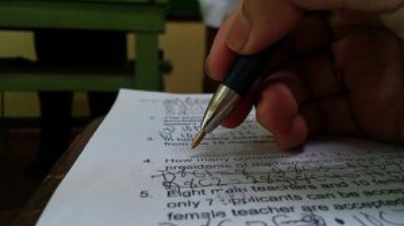5.3: Learning Hacks- What's the Best Use of My (Limited!) Time?
- Page ID
- 139385
The Hack
The most efficient way to learn something is by practicing. This turns out to be a much better use of time than other study techniques like rereading or highlighting.

The Story
It turns out that human beings learn by doing. You’ve probably experienced this yourself – you might feel like you understand something when you’re sitting in lecture or reading about it in your textbook, but then you start doing the homework and realize that you haven’t quite gotten it yet. It’s not until you actually practice the concept that you’re learning that it really starts to stick in your brain.
Your experience is backed up by tons of research on learning. Over and over again, learning science research has shown that people learn by doing. While reading or watching a video about a concept may make you feel like you understand, it’s the act of practicing the concept that actually creates the connections between neurons in your brain.
Practice can take many forms. For example: answering the practice or self-check questions in an online course like this one, or answering homework questions or working problems at the end of a chapter in your textbook. Even making up practice questions for yourself after you read a page of content is effective practice!
The Research
When researchers compared practice with other study techniques like rereading and highlighting, here’s what they found:
| Study Technique | Usefulness |
|---|---|
| Doing practice questions | High |
| Spacing out your practice over time | High |
| Rereading | Low |
| Highlighting | Low |
| Summarization | Low |
We talked about practice in this learning hack. We’ll tell you about how to space out your practice over time in an upcoming one. We’ll also talk a little bit about why techniques like highlighting are not as useful.
The Source
Dunlosky, J., Rawson, K. A., Marsh, E. J., Nathan, M. J., & Willingham, D. T. (2013). Improving Students’ Learning With Effective Learning Techniques. Psychological Science in the Public Interest, 14(1), 4–58. doi:10.1177/1529100612453266
Hattie, J. A.C. (2009). Visible learning: A synthesis of over 800 meta-analyses relating to achievement. New York, NY: Routledge.
Ambrose, Susan A.. (Eds.) (2010) How learning works :seven research-based principles for smart teaching San Francisco, CA : Jossey-Bass,
Licenses and Attributions
CC LICENSED CONTENT, ORIGINAL
- Learning Hacks: What's the Best Use of My (Limited!) Time?. Authored by: Lumen Learning. License: CC BY: Attribution
CC LICENSED CONTENT, SHARED PREVIOUSLY
- Image of a student answering a test. Authored by: Pokefan95. Located at: https://commons.wikimedia.org/wiki/File:A_student_answering_a_test.jpg. License: CC0: No Rights Reserved

